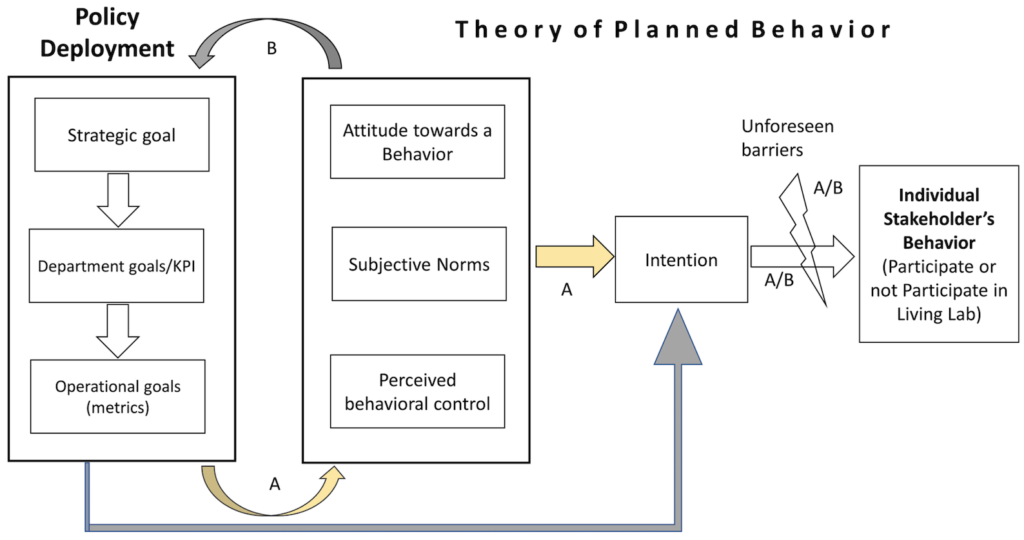Stakeholders play vital roles in the implementation of sustainable last-mile logistics solutions. Goal alignment in sustainable last-mile logistics that involve multiple stakeholders is complex and challenging, yet it can improve the chance of success of the last-mile logistics project. Furthermore, aligning stakeholder goals in sustainable last-mile logistics can help optimize individual supply chain actors’ resources and strengthen each other’s position in the industry. Therefore, the first step in setting up successful sustainable last-mile logistics is to conduct stakeholder analysis.
A new paper by Tolentino-Zondervan et al. analyzes the stakeholders’ goals in the Heijendaal living lab, a city logistics project that uses two hubs for bundling goods to be delivered to the Heijendaal campus in The Netherlands. The researchers used the Theory of Planned Behavior and Policy Deployment to present a qualitative case study, examining stakeholders’ goals concerning their roles in the supply chain and in the organization and whether these goals lead to their expected participation behavior.

Results show that stakeholders have economic, social, and environmental goals. Some of these goals are prominent within certain groups of stakeholders along the supply chain and the organization. In addition, the set goals do not always lead to the participation behavior of stakeholders due to identified disruptions and habits. This study identifies the importance of information sharing and collaboration within the supply chain, the leading role of middle-level managers in translating strategic to operational goals, and the stimulation of behavioral factors to increase participation of stakeholders in the living lab.
Based on the results, there are three main conclusions derived from this study. First, if the sustainability goals of stakeholders are aligned along the supply chain and between the management levels, the more likely the organization will participate in sustainable last-mile logistics. On a supply chain level, alignment could be achieved via information sharing and collaboration, requiring the use of the City hub on a tendering process and intervention of receivers to help suppliers. On an organizational level, middle-level managers could play an essential role as boundary spanners by translating strategic goals to operational levels, influencing cultures at lower levels, and bringing information and insights to both lower and upper levels. Second, influencing individual behavioral factors such as attitude, norms, and control could lead individuals and organizations to set sustainability goals and participate in sustainable last-mile logistics.
Strengthening the behavioral factors may include individual exposure to sustainability, training, and hiring personnel based on their affinity to sustainability. Third, coping with unforeseen barriers such as habits and disruption factors could improve the sustainable behavior of an individual and eventually the organization as a whole. This could be done by increasing awareness by adding an IT function that will inform employees of the consequences of their buying behavior and by making participation in sustainable last-mile logistics part of an individual’s work.
